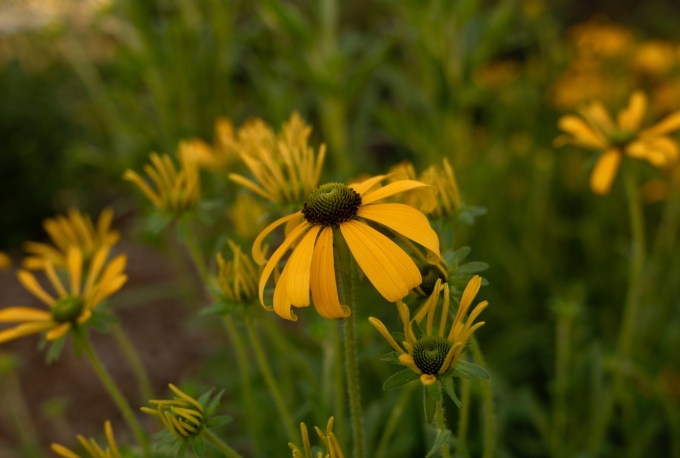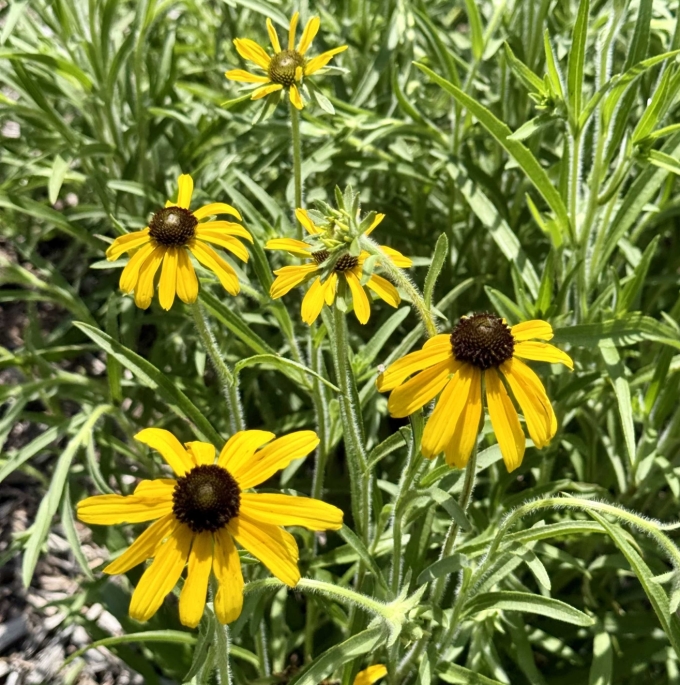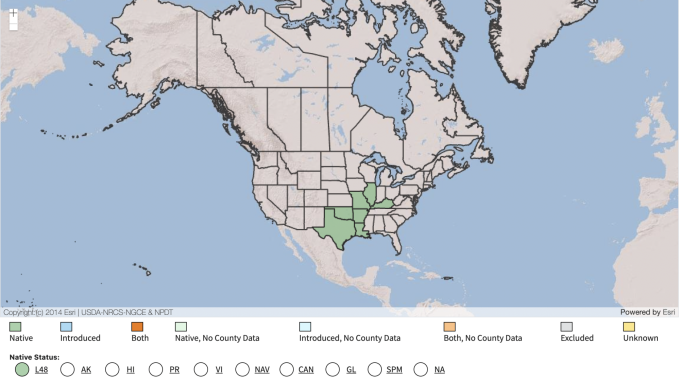Common Name: Missouri Orange Coneflower
Family: Asteraceae
Plant Type: Herbaceous Perennial
Native Range: Central U.S., including Missouri, Kansas, and extending into parts of Nebraska
Hardiness Zones: 4–8
Height: 1.0 to 2.0 feet
Spread: 1.5 to 2.5 feet
Bloom Time: Mid to late summer (July–September in Nebraska)
Bloom Description: Cheerful golden-yellow, daisy-like flowers with slightly reflexed petals and a dark brown cone
Sun Exposure: Full sun
Water Needs: Low to medium
Soil Preference: Well-drained; thrives in rocky, sandy, or clay soils
Management Level: Low
Suggested Use: Prairie gardens, borders, rock gardens, pollinator plantings, xeriscapes
Attracts: Bees, butterflies, beneficial insects
Tolerates: Drought, poor soils, heat, deer
Notable Features: Compact size, long bloom season, excellent pollinator plant, native to Nebraska’s southern and eastern regions
Nebraska Growing Notes:
Missouri Orange Coneflower is a hardy, compact native perennial that excels in Nebraska’s sunny, dry, and often challenging soils. It tolerates heat, drought, and poor soils better than many taller Rudbeckia species, making it perfect for more exposed or low-input garden areas.
Its smaller stature and clumping habit make it less aggressive and more refined than Rudbeckia hirta or Rudbeckia triloba, yet it still provides weeks of vibrant yellow blooms during peak summer.
This plant is particularly valuable for prairie restorations and xeric designs, where it weaves among grasses and other forbs while attracting pollinators.
Little maintenance is required, deadheading can prolong bloom, but leaving seed heads supports wildlife and adds fall and winter texture.
Landscape Use:
Outstanding in prairie-style gardens, pollinator habitats, rock gardens, and border fronts. Blends well with Echinacea, Liatris, Coreopsis, Bouteloua gracilis, and other dry prairie plants. Its compact form makes it a great choice for smaller spaces or where a more controlled appearance is desired.
Caution:
Non-toxic and safe for wildlife. Not aggressive or invasive compared to other Rudbeckia species. Easy to control and long-lived in well-drained soils.
Garden Locations:
Sources:
https://plants.usda.gov/plant-profile/RUMI
https://www.missouribotanicalgarden.org/PlantFinder/PlantFinderDetails.aspx?taxonid=277465




